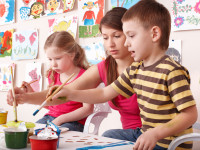Parents who have children with behavioral and learning disorders will likely tell you their children also struggle with sensory overload problems.
Sensory overload, or also referred to as sensory overstimulation, is when an environment’s sensory experiences are too overwhelming for a child’s nervous system to process it successfully or make any meaning out of the sensory experience. Children showing signs of sensory overload often require the help of a San Diego pediatric occupational therapist to work with them in tackling these struggles.
This sensory overload could affect one or more of their senses like their hearing or sight. This condition impacts children in different ways. While one child may be over-sensitive to loud noises or sounds, another may have sensory issues with different clothing textures. Sensory overload doesn’t just affect children with autism or other challenges, it can happen to any child even without a diagnosis, therefore it’s important to know the signs.
Signs of Sensory Overload in Children
The first thing you may notice is your child behaving oddly or having temper-tantrums or mood swings for no good reason. This is usually due to a change in their environment which causes them to shift their behavior and react radically.
You may also notice behaviors such as your child dashing across a parking lot or playground as if to flee from something upsetting; often oblivious to the danger. They’re likely trying to get to a more calming environment.
Sensory overload symptoms vary among children. Some common symptoms, however, include:
- Tantrums or mood swings for no apparent reason
- Crying outbursts
- Irritability
- A quick shift in their mood
- Falling asleep unexpectedly
- Blocking their ears or hiding their face to block out certain sensory input
- Nervousness
- Staring blankly or having a glazed look on their face
If your child is experiencing sensory overload, it doesn’t mean something is wrong with them. With help from their pediatric occupational therapist and working with sensory strategies and tools, they can return to a calm state and regulated state.
Our environment and society don’t accommodate children with sensory overload problems. Therefore, it’s up to the parent to avoid over-stimulation as much as possible or help your child learn to adapt to it.
